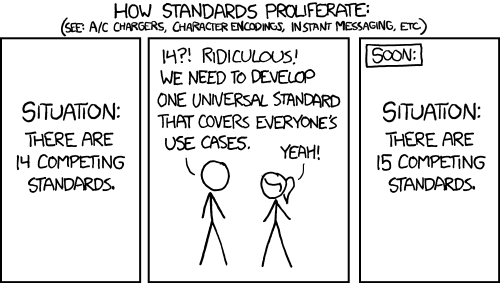The way you see nutrition labels on food packaging is about to change. By 2025, new front-of-package labels will start appearing on grocery store shelves, and by January 2026, they’ll be mandatory.
Over the past two decades, nutrition labelling has evolved into a cornerstone of public health strategies worldwide. Traditional back-of-package labels, which provide comprehensive nutritional details, are often overlooked due to their complexity and placement, making them less effective in guiding consumer choices.
Front-of-package labels address this issue by simplifying key nutritional information and positioning it in a more prominent, visible space. This streamlined approach has proven successful in leading consumers toward healthier choices, as research indicates that simplified, visible labels can influence purchasing decisions
This is the resource I go to when I need to check something, and it should be excellent for learning more on some privacy topics.
https://www.privacyguides.org/en/
After that you might need to go find another resource for the specific technical topics. They have a discussion section, so you can ask for recommendations there?
Reminded me to check on this Kickstarter I saw ages ago
Looks like they made it, I might grab one at some point
hey it looks like you posted a few times. Two of them have discussions already, but maybe you can delete this one?
Oh the twitter post
I didn't notice where the quote ended
By local community I meant one that's specific to a small local area (ex. School, municipality). It's possible that people from other parts of the world are seeing the post in the All type feeds, but I found it odd that only views went up while comments and votes didn't until morning.
It makes sense for the cause to be bots, but that makes the number deceptive since it's implying that your post reached a certain number of human viewers. It should be possible to adjust that number based on their estimates of humans vs. bots
That's true, although some brands will still be better than others for quality at a certain price point, or cost/wear
The post has been viewed 3.7 million times.
Assuming this is the info box in new Reddit, those stats always felt... wrong
The difference between comments/votes and supposed "views" made it seem like the later was inflated.
Even more obvious was when something got posted at odd hours of the night in a local community. The view count would take off shortly after, while the comments and votes would only show up around when people wake up.
For astronomy there is !astronomy@mander.xyz. The communities on mander.xyz are STEM focussed and usually well moderated.
You could also try
As for the instance, stay wherever you feel most comfortable. I have a few alts on other instances, including lemmy.world. You're also free to move later if you decide to.
If it helps I am based in the UK.
You can also check out the instance / communities at
https://github.com/mastodon/mastodon/issues/24837
I think so, and I agree that it's confusing. There's some discussion about it here
Wireless is just a fad anyway /s
Many expressed their appreciation for Kalle's years of service to the Linux networking stack but as of writing no one has stepped up to take over the formal maintainer role. Thankfully there are other Linux WiFi driver developers out there working on the increasing number of Linux wireless drivers, just not any immediate leader yet to take on the maintainer duties.
Good to know :)
While I didn't use Linux back then, I heard the wifi situation was difficult to deal with. I assume this maintainer is responsible for fixing that over the years?

!taneggs@lemmy.ca
@DaMonsterKnees@lemmy.world has been amazing and consistent with posting new content, I love when the posts pop up